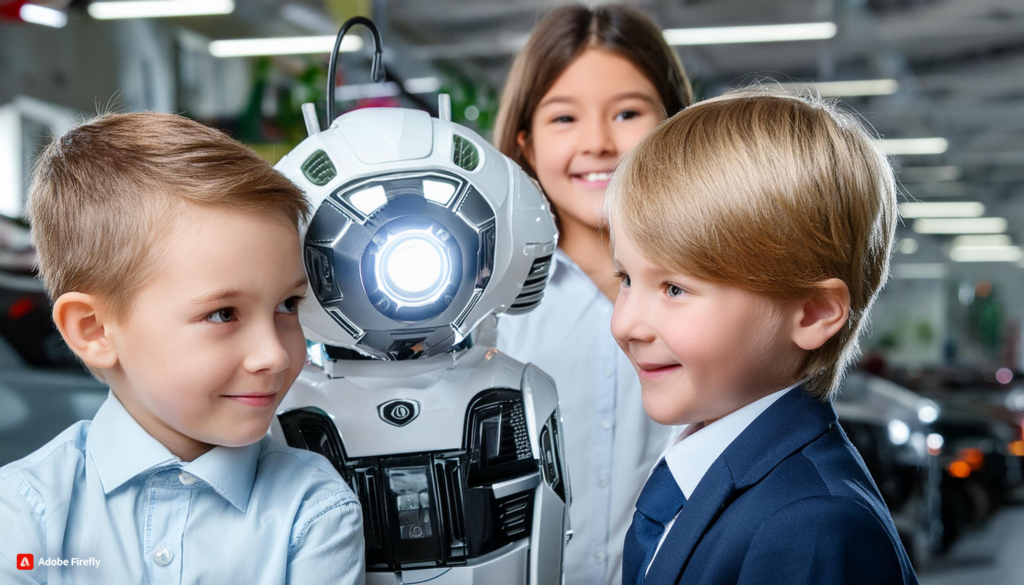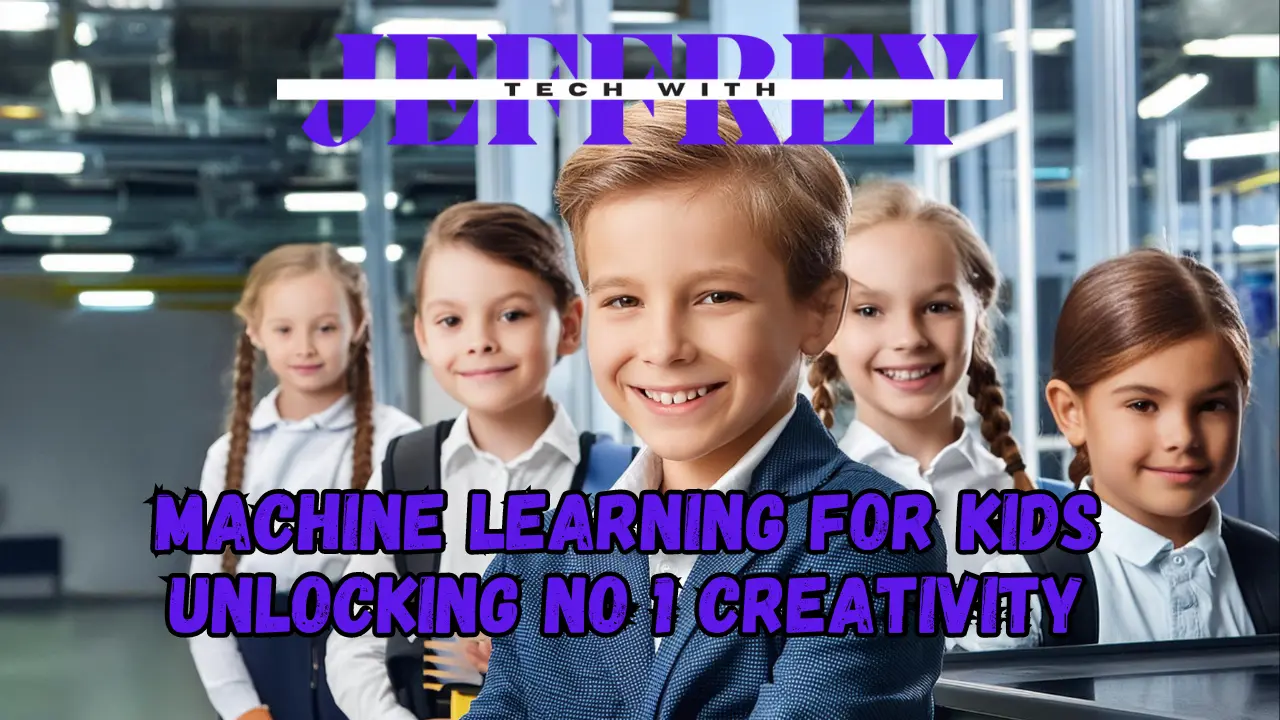Table of Contents
Introduction To Machine Learning For Kids
Nowadays, machine learning (ML) is reshaping industries and transforming our daily lives. From healthcare to entertainment, ML is being used to enhance efficiency, improve decision-making, and create personalized experiences. But guess what? It’s not just for tech experts and data scientists—kids can get in on the action too!
Simply put, machine learning is a branch of artificial intelligence where computers learn from data and make decisions without someone having to program every step. For example, recommendation systems on streaming platforms or voice recognition in smart devices rely heavily on ML algorithms.
Introducing ML to children can be a fun and engaging way to prepare them for the future. Learning about ML can help them understand how technology impacts their lives and the world around them. Not to mention, it can also spark their creativity and innovation, allowing them to experiment with building their own smart applications or solving problems using ML techniques.
By nurturing these skills early on, we can empower the next generation to become not just consumers of technology, but also creators and innovators in an increasingly digital world.

Why It’s Important For Kids To Learn Machine Learning
As technology keeps advancing and becoming more common in our lives, it’s super important for kids to develop skills that will prepare them for future jobs. Machine learning (ML) is one of the fastest-growing fields, with a big demand for skilled pros.
By introducing ML to kids early on, we can help them build critical thinking and problem-solving skills, which are key to success in this field. Additionally, exposing children to the basics of ML can stimulate their curiosity and foster a lifelong interest in science and technology.
Furthermore, learning about ML can broaden their understanding of how technology works and how it can be used to tackle real-world problems.
For instance, they might explore how ML is applied in healthcare for predictive diagnostics, in environmental science to analyze climate change patterns, or in finance for fraud detection.
By providing a strong foundation in ML concepts, we can empower the next generation to not only adapt to technological advancements but also to drive innovation and create solutions that address some of the world’s most pressing challenges.
Investing in their education today sets the stage for a future where they can thrive and make meaningful contributions across diverse industries.

Benefits Of Teaching Machine Learning To Kids
Teaching machine learning to kids comes with tons of benefits, like:
- Sparking creativity: Machine learning lets kids think outside the box and come up with cool solutions to problems.
- Building critical thinking skills: ML involves analyzing data and making decisions, helping kids develop sharp critical thinking skills.
- Promoting teamwork: ML projects often need collaboration, so kids get to learn how to work together and communicate effectively.

How To Introduce Machine Learning To Kids
Making machine learning fun and accessible for kids is so important! Here are some practical tips and resources for educators and parents:
1: Start with Basics:
- Explain ML concepts using simple language and relatable examples.
- Use visual aids like charts and diagrams to show how ML works.
2: Interactive Online Platforms:
- Scratch and Code.org provide interactive coding exercises perfect for beginners.
3: Hands-On Projects:
- Encourage kids to create their own ML models using tools like Teachable Machine by Google.
- Organize workshops or coding camps focused on ML topics.
4: Use Storytelling:
- Integrate ML concepts into stories or games to make learning more engaging.
- Create scenarios where kids can apply ML to solve problems in the story.
Success Stories
Real-life examples can inspire kids to dive deeper into ML. Check out these awesome success stories of young innovators:
- Emma Yang, a 14-year-old who created an app using ML to help Alzheimer’s patients recognize their loved ones.
- Samaira Mehta, a young coding whiz who invented CoderBunnyz, a board game that teaches basic coding and ML concepts.
These stories show how kids can use ML to make a real difference in their communities.

Addressing Concerns
It’s natural for educators and parents to have concerns about teaching machine learning to kids. Let’s clear up some common misconceptions and how to overcome them:
- Misconception: “ML is too complex for kids.”
- Reality: With the right tools and resources, we can simplify ML concepts for young learners.
- Misconception: “Learning ML requires advanced math skills.”
- Reality: Basic coding knowledge and logical reasoning are enough to get started with ML.
- Concern: “Screen time and digital addiction.”
- Solution: Balance ML learning with other activities and encourage hands-on coding projects.
The Future Of ML In Kids’ Education
The integration of Machine Learning (ML) in educational curricula is really picking up steam. As technology continues to evolve at a rapid pace, ML skills are becoming increasingly valuable across various career paths, from data science to artificial intelligence, cybersecurity, and beyond.
By introducing ML education early on, we can equip the next generation with the critical tools they need to thrive in a tech-driven world.
Early exposure to ML concepts, such as algorithms, data analysis, and predictive modeling, can foster a deeper understanding and appreciation for technology among students. This not only enhances their problem-solving and analytical skills but also encourages creativity and innovation.
By cultivating these competencies, we prepare our children for a future where technological fluency is paramount.
Let’s unlock our kids’ potential and inspire them to become future tech leaders through comprehensive and engaging machine-learning education. By doing so, we are not just shaping individual futures but also contributing to a society that can leverage technology for the greater good.
Conclusion
Machine learning for kids isn’t just about coding; it’s about sparking creativity, boosting problem-solving skills, and gearing up for future opportunities.
By introducing ML concepts in a fun and engaging way, we can ignite young minds to explore and innovate. Introducing children to machine learning at an early age helps them understand complex algorithms, data patterns, and the critical thinking required to solve real-world problems. They learn to approach challenges with analytical thinking and creativity, which are essential skills in the rapidly evolving tech landscape.
Ready to take the next step? Subscribe for More Educational Insights and stay updated with the latest trends and tips in tech education.
Our carefully curated content will provide you with the resources and guidance needed to integrate machine learning and other tech concepts into your child’s learning journey. Let’s empower our kids to become the tech leaders of tomorrow and equip them with the knowledge and skills to shape a brighter future!
Check Out Our Latest Blogs
- Crypto Intelligence News 1st Exciting Regulatory Changes and Crypto Updates
- Empowering Journey Into Day Trading Crypto A Beginner’s Guide To 10X Success
- How Consistent Is The No. 1 Artificial Intelligence Death Calculator?
- Everything You Need To Know About Doodle For Google’s No 1 Inspirational Journey
- Sports Technology Labs 7 Cutting-Edge Innovations Transforming The Game
Frequently Asked Questions
-
What is machine learning for kids?
Machine learning for kids involves teaching children the basics of how computers can learn from data to make decisions, helping them understand technology’s impact on their lives.
-
Why should kids learn machine learning?
machine learning for kids helps develop critical thinking and problem-solving skills and prepares them for future careers in a tech-driven world.
-
How can we introduce machine learning to kids?
Start with simple explanations, use visual aids, and employ interactive platforms like Scratch and Code.org to make learning machine learning for kids fun and engaging.
-
What are some benefits of teaching machine learning to kids?
Machine learning for kids can spark creativity, build critical thinking skills, and promote teamwork through collaborative projects.
-
Are there any success stories of kids using machine learning?
Yes, examples include Emma Yang, who created an app to help Alzheimer’s patients, and Samaira Mehta, who invented CoderBunnyz to teach coding and ML concepts.
-
What tools can help kids learn machine learning?
Tools like Google’s Teachable Machine and kid-friendly tutorials from platforms like Code.org can make learning machine learning for kids more accessible.
-
Is machine learning too complex for kids?
While machine learning may seem complex, it can be simplified for kids using the right tools and resources, making it accessible and understandable.
-
Do kids need advanced math skills to learn machine learning?
No, basic coding knowledge and logical reasoning are sufficient to get started with machine learning for kids.
-
How can we balance screen time while teaching machine learning to kids?
Balance screen time with hands-on projects and other activities to prevent digital addiction while teaching machine learning for kids.
-
What is the future of machine learning for kids’ education?
Integrating machine learning into educational curricula prepares kids for a tech-driven future, enhancing their problem-solving and analytical skills while fostering creativity and innovation.














4 thoughts on “Machine Learning For Kids Unlocking No 1 Creativity And Innovation”